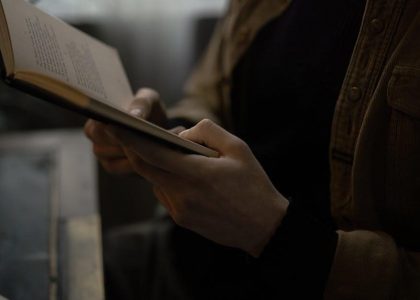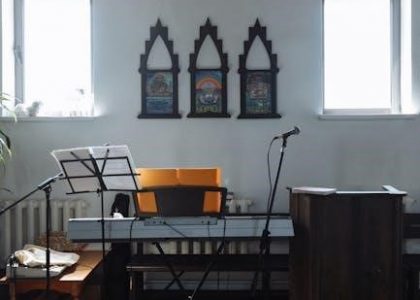The novel Lord of the Flies written by William Golding is a classic tale of survival and humanity, exploring the darker aspects of human nature through a group of young boys.
Background Information
The novel Lord of the Flies was written by William Golding and published in 1954.
The story takes place during an unspecified war, with a group of British schoolboys stranded on a deserted island after a plane crash.
The author’s experiences in World War II influenced his writing of the novel, which explores the effects of isolation and the nature of humanity.
Golding’s work was initially rejected by several publishers, but eventually found success and became a classic of modern literature.
The novel has been translated into many languages and has sold millions of copies worldwide.
The story has also been adapted into several film and stage productions, including a 1963 film directed by Peter Brook.
The novel’s themes and characters have become a part of popular culture, with references in music, film, and literature.
The author’s use of symbolism and allegory adds depth and complexity to the story, making it a thought-provoking and haunting read.
The novel’s exploration of human nature and society continues to resonate with readers today.
The story is a powerful commentary on the effects of fear, power, and survival on human behavior.
Plot Overview
The story of Lord of the Flies begins with a plane crash on a deserted island, where a group of British schoolboys are stranded.
The boys, led by Ralph and Jack, attempt to create a utopian society, but their efforts are soon undermined by their own fears and desires.
As the novel progresses, the boys’ behavior becomes increasingly savage, and they turn on each other.
The plot is driven by the conflict between Ralph’s desire for civilization and Jack’s desire for power and hunting.
The boys’ actions are influenced by their surroundings and their own personal demons, leading to a downward spiral of violence and chaos.
The novel’s plot is a slow-burning build-up of tension, culminating in a dramatic and devastating conclusion.
The story is a gripping and thought-provoking exploration of human nature, and the effects of isolation and fear on a group of young people.
The plot is full of twists and turns, keeping the reader engaged and invested in the characters’ fate.
Symbolism in Lord of the Flies
Objects and colors symbolize human characteristics and societal influences in William Golding’s novel very effectively always.
The Conch Shell
The conch shell is a significant symbol in the novel, representing order and civility among the boys.
It is used to call gatherings and maintain a sense of democracy, as only the boy holding the shell is allowed to speak.
The shell’s power is evident in the way it brings the boys together, creating a sense of unity and cooperation.
As the novel progresses, the shell’s influence wanes, symbolizing the decline of civility and the rise of savagery.
The shell is also a symbol of the boys’ connection to the adult world, representing the rules and norms of society.
The conch shell’s significance is further emphasized by its gradual loss of importance, mirroring the boys’ descent into chaos and anarchy.
The shell’s role in the novel serves as a reminder of the importance of order and civility in maintaining a functioning society.
The conch shell is a powerful symbol that adds depth and meaning to the novel, exploring themes of humanity and society.
The Beast
The Beast is a mysterious and terrifying entity that the boys believe inhabits the island, symbolizing their deep-seated fears and anxieties.
The Beast represents the unknown, and the boys’ attempts to understand and appease it drive the plot of the novel.
The Beast is a product of the boys’ imaginations, fueled by their own fears and superstitions.
As the novel progresses, the Beast becomes a symbol of the boys’ own savagery and primal nature.
The Beast is also a symbol of the boys’ loss of innocence, as they begin to realize that the true monster is not the Beast, but themselves.
The concept of the Beast serves as a catalyst for the boys’ descent into chaos and anarchy, highlighting the dangers of fear and superstition.
The Beast is a powerful symbol that adds complexity to the novel, exploring the human psyche and the nature of fear.
The Beast’s significance is evident in its enduring presence throughout the novel, shaping the boys’ actions and decisions.
Themes in Lord of the Flies
Exploring human nature and society through a group of young boys stranded on an island with various themes emerging throughout the novel slowly.
Human Nature
The concept of human nature is a central theme in the novel, as the boys’ behavior and actions reveal their true instincts and characteristics. Through their experiences, the novel explores the idea that human beings are inherently flawed and that savagery is a natural part of human nature. The characters’ descent into chaos and violence serves as a commentary on the darker aspects of human nature, suggesting that when left to their own devices, humans will inevitably resort to primal instincts. The novel also raises questions about the role of environment and upbringing in shaping human behavior, and whether humans are born with a innate sense of morality or if it is learned through experience and socialization. The exploration of human nature is a complex and thought-provoking aspect of the novel, inviting readers to reflect on their own values and beliefs.
Civilization vs Savagery
The struggle between civilization and savagery is a dominant theme in the novel, as the boys’ behavior and actions reflect the conflict between these two opposing forces. The novel portrays the boys’ gradual descent into savagery, as they abandon the rules and norms of civilized society and embrace a more primal way of life. The character of Jack, with his obsession with hunting and his desire for power, represents the savage instinct, while the character of Ralph, with his emphasis on building shelters and starting fires, represents the civilized instinct. The novel suggests that civilization is a fragile construct, and that without the constraints of society, humans will inevitably revert to a more savage state. The tension between civilization and savagery is a recurring motif, as the boys’ actions and decisions reflect the ongoing struggle between these two opposing forces, ultimately leading to chaos and destruction.
Analysis of Lord of the Flies
Analysis of the novel reveals deeper meanings and symbolism, exploring human nature and society through a critical lens of literary criticism and theoretical frameworks always used.
Psychological Analysis
A psychological analysis of the novel Lord of the Flies reveals the boys’ behavior is influenced by their subconscious minds and emotional states, driven by fear, anxiety, and the desire for power and control.
The characters’ actions and decisions are shaped by their individual personalities, experiences, and environmental factors, leading to a downward spiral of chaos and savagery.
The novel explores the concept of the “id” and the “superego”, as the boys struggle with their primal instincts and moral principles, raising questions about the nature of humanity and the effects of isolation on the human psyche.
Through the characters’ interactions and relationships, the novel provides insight into the psychological effects of trauma, stress, and the breakdown of social norms, offering a thought-provoking commentary on human behavior and the psychological aspects of human nature.
The psychological analysis of the novel adds depth and complexity to the story, inviting readers to consider the motivations and emotions that drive the characters’ actions.
Sociological Analysis
A sociological analysis of Lord of the Flies examines the social structures and institutions that emerge on the island, revealing the ways in which social norms, values, and power dynamics shape the boys’ behavior and interactions.
The novel explores the effects of social isolation and the breakdown of traditional social norms, highlighting the ways in which social order is maintained and challenged.
The characters’ social roles and relationships are influenced by their social status, age, and personality, leading to conflicts and power struggles that reflect broader sociological themes.
Through the lens of sociological theory, the novel can be seen as a commentary on the socialization process, the role of social institutions, and the ways in which social norms are constructed and maintained.
The sociological analysis of the novel provides a framework for understanding the social dynamics at play on the island, offering insights into the ways in which social structures shape individual behavior and social outcomes.




